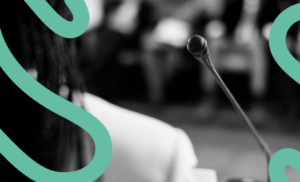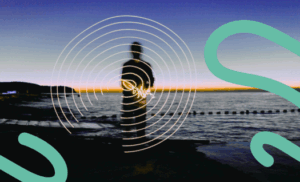At the end of last year, the well-known Italian influencer Chiara Ferragni lost almost 100,000 followers in one fell swoop on Instagram, several advertising contracts and was involved in her biggest reputational crisis (including a hefty fine). No matter how much you spend years building a perfect image, taking the utmost care with the details of both you and your family, one single action, badly brought or badly executed, can throw away all your image-building work.
Chiara’s case was no exception. On 15 December, the influencer was featured in the Italian media for being involved in a fraudulent charity campaign. The confectionery brand Balocco, using the Italian brand’s logo for a Christmas campaign in which it would donate a percentage of the proceeds to the Regina Margherita hospital in Turin, did not keep its promise. Unsurprisingly, this splashed directly onto Ferragni, throwing away the values that the influencer had built up over the years. When it comes to charitable actions, or actions that affect morality, great care must be taken. In this case, the buyers felt cheated, with the aggravating factor of using children with autism for their cause.
The importance of brand reputation
Brand reputation is the perception that different audiences have of a brand, product or service (communication expert Ana Suero tells us in an episode of our vidcast of La Cueva de Moe). Having a good reputation means that your customers trust your brand; Chiari Ferragni, being her own brand, had that reputation and trust, as evidenced by her almost 30 million followers on Instagram. The fall was then even steeper.
Reputation does not necessarily have to match the image that brands or companies try to convey, but is the result of experiences, sensations or emotions. Reputation management is therefore not an easy task, as feelings come into play. However, such management is absolutely necessary, as it has a direct impact on the consumer’s purchasing decision.
According to a Gartner study, in Spain, consumers’ willingness to buy a company’s products is 23% if the company has an average reputation, 39% if the reputation is solid and 77% if the reputation is excellent. In addition, 55% of Spaniards look for information on social networks before making a purchase. Of these, 52% say that reviews have a strong influence on their purchase decision and 41% leave comments after the purchase.
From reputation to crisis, or from love to hate, there is only one step
A brand or a company faces a reputational crisis when it is badmouthed. This may be due to criticism from dissatisfied customers, failure to meet promises or expectations (the case of Ferragni’s panettone), failure to operate in a responsible or legal manner, etc. Reputational risk is any kind of threat or danger that could damage your company’s good image and negatively affect your overall business success and reputation with consumers.
Although any reputational crisis will result in a compromised situation for the company or brand, not all are the same and not all have the same scope. There are different reasons or situations that can provoke crises and, depending on the reasons, they will have a greater or lesser impact on brands or companies:
- Corruption and fraud scandals. How many times have we heard of embezzlement or fraudulent accounting practices? If we go to the realm of politics, we would have a countless list of cases.
- Defective or dangerous products/ quality or safety problems. Depending on the degree of danger, so will be the degree of reputational crisis.
- Data privacy breaches. They are everywhere in today’s digital age and data is the most important asset for businesses today. How many companies have not suffered a cyber-attack in recent months? We could cite a multitude of examples: From Microsoft or Facebook, to Telepizza or different hospitals, city councils, etc.
- Misconduct by employees or managers. These crises can be very serious if they involve accusations such as sexual harassment or theft.
Another type of crisis may be related to environmental or social disasters, such as the recent collision of a cargo ship with Baltimore’s major bridge in the United States. The event caused a real crisis when it collapsed completely, resulting in the deaths of several people and a total blockage of the bay and commercial traffic. There are also crises caused by labour or employee problems, which can generate very bad press and negatively affect the public perception of the company.
As communication and public relations professionals, we cannot ignore crises related to our work. Poor communication management during one of the situations described above, including lack of transparency or inadequate response, can worsen the scenario and further damage a company’s reputation.
In short, whatever the origin and degree of the crisis, there must be an action protocol to try to resolve it in the best possible way.
So what do we do when a reputational crisis happens?
Returning to the case of Chiara Ferragni, what did she and her brand do to try to regain her reputation? She acknowledged the mistake and apologised publicly on social media. In my view, this is the best way to deal with a reputational crisis.
That said, when faced with a crisis, the first step would be to assess the situation and the source of the crisis before acting. It is important to understand the magnitude and nature of the problem in order to act accordingly. Once the source has been detected, it is time to deploy transparent and proactive communication. It is crucial to communicate openly and honestly with all stakeholders. How? Using press releases, social media posts and other communication channels in a TRANSPARENT manner and commenting on the measures that will be taken to address the problem.
To this end, it is essential to know how to listen and respond to the concerns of stakeholders such as customers, potential customers, employees, shareholders, society, etc. Responsibility must be taken and public apologies made, if necessary, and corrective action taken.
And all this has to be proven! We will need to ensure that we communicate the changes and improvements made through public relations initiatives or publicity, highlighting the company’s commitment to responsibility and ensuring that stakeholders receive our messages.
Now that the crisis is over, have we learned our lesson? The crisis, if well dealt with, can help us to strengthen company policies and procedures to prevent future crises. If you want to know more about this topic, I recommend you listen to the episode of La Cueva de Moe “De crisis reputacional con sabor a bocadillos y panettones“.










